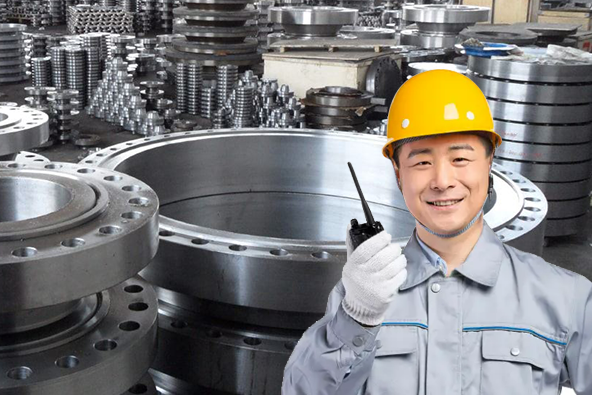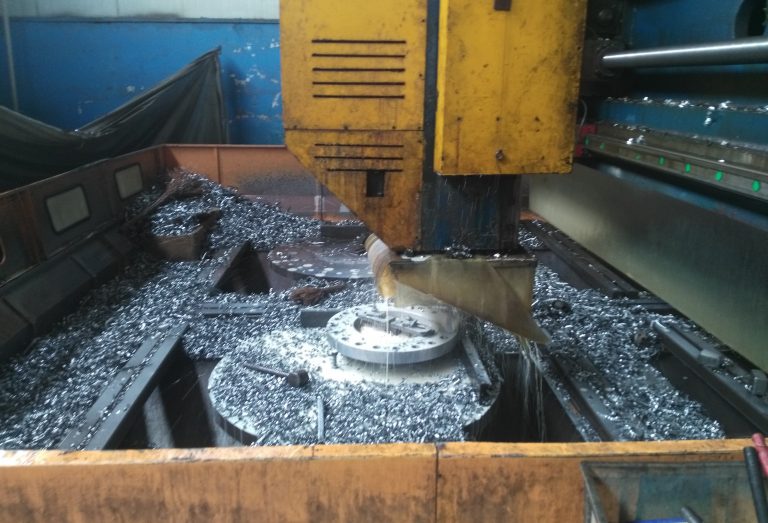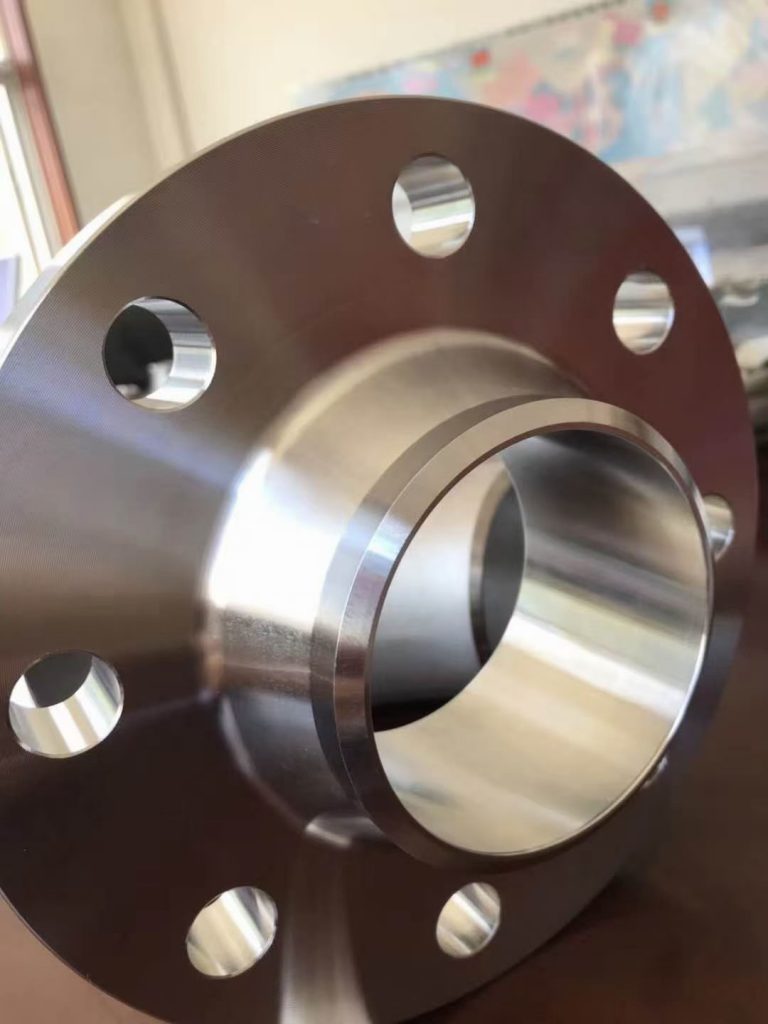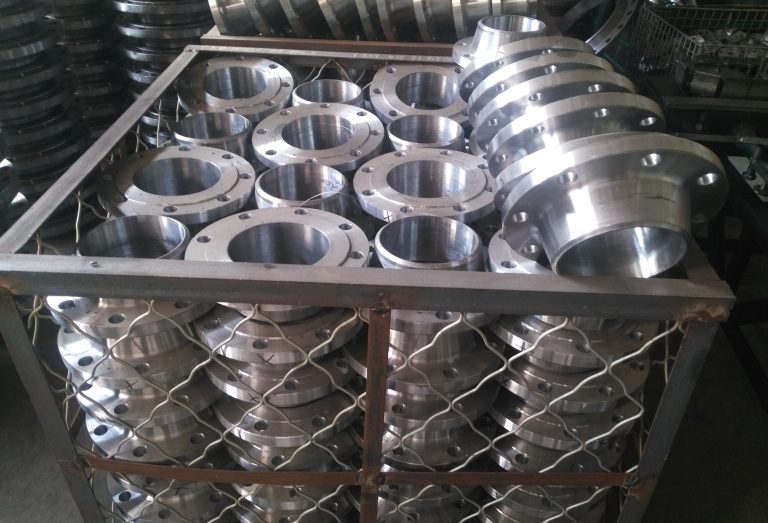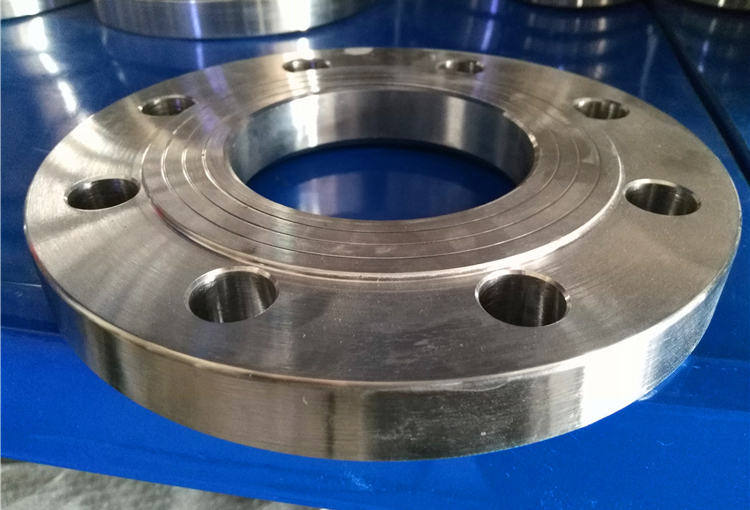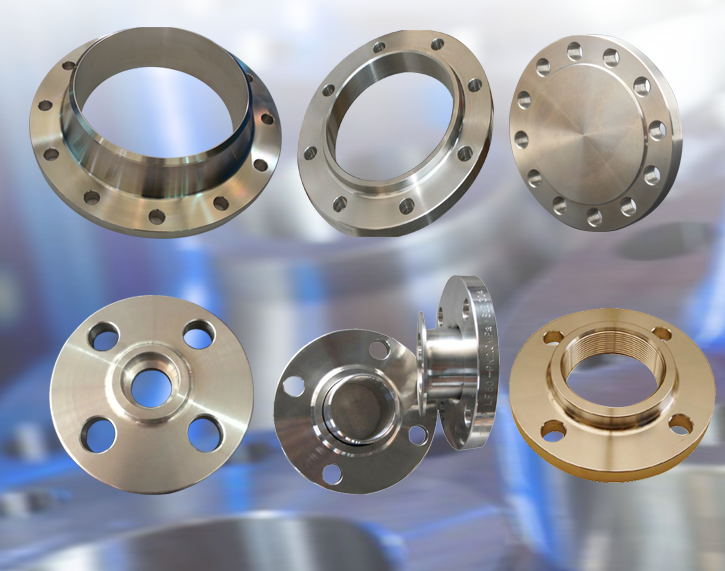I. Introduction
Flange and pipe fittings are essential components of any piping system. They act as connectors that help in joining different piping sections, and they play a crucial role in ensuring the system’s safety and efficiency. When it comes to flange and pipe fittings, ANSI flanges are widely used, especially in the US, and are known for their excellent quality and performance.
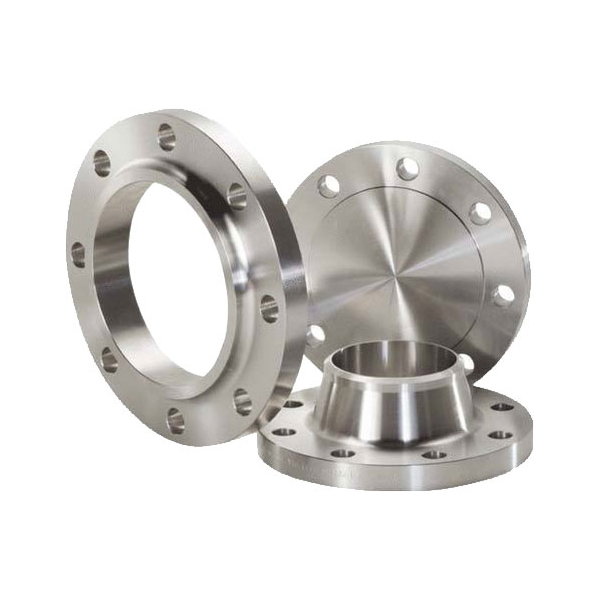
As a manufacturer of various flange and pipe fittings in China, YANHAO understands the importance of ANSI flanges in piping systems. In this blog, we will delve into the applications of ANSI flanges in detail, providing expert insights into the material considerations, types, dimensions, installation, maintenance, and repair of ANSI flanges. We hope you find this blog informative, and that it provides you with a better understanding of ANSI flanges and their significance in the industry.
II. What is ANSI Flange?
- Different materials are used in manufacturing ANSI flange.
- Material selection factors and considerations: temperature, pressure, chemical environment, etc.
- Benefits of using high-quality materials in ANSI flange manufacturing.
Flanges are used to connect pipes, valves, and other equipment in a piping system. ANSI flanges, in particular, are widely used in the United States and are essential components in many piping systems due to their high-quality construction and reliability.
ANSI flanges are defined as American National Standard Institute (ANSI)-standardized flanges that are used for connecting pipes, valves, and other equipment in piping systems. These flanges come in a variety of sizes, shapes, and materials, and are classified based on factors such as pressure-temperature ratings, facing type, and material type.
One of the advantages of using ANSI flanges is their versatility. They can be used in a wide range of piping systems, handling high pressures and temperatures without any compromise in quality. Another advantage of ANSI flanges is their ease of installation and maintenance. They are designed to reduce the costs and time associated with maintenance and installation.
When it comes to material considerations, ANSI flanges can be made from a variety of materials such as stainless steel, carbon steel, and alloy steel. Material selection is an essential factor to consider, as different materials perform better under varying environmental conditions. Factors such as temperature, pressure, and the chemical environment of the piping system can affect the material’s durability. Therefore, selecting high-quality materials is crucial for the longevity of ANSI flanges in a piping system.
In conclusion, ANSI flanges provide reliable and high-quality performance in piping systems. They are versatile, time-efficient, and cost-effective, making them an excellent option for various industries worldwide. Selecting the right material for manufacturing ANSI flanges is the key to ensuring their long-term durability and optimum performance.
III. ANSI Flange Material Considerations
Material selection is a crucial aspect to consider in the manufacturing of ANSI flanges. Different materials such as stainless steel, carbon steel, and alloy steel can be used, each with its unique properties and benefits.
The selection of materials used to manufacture ANSI flanges will significantly affect the flange’s performance and durability. The factors to be taken into consideration while choosing the materials include temperature, pressure, chemical environment, and other factors that can directly affect the quality of the flange.
For instance, in low-temperature applications, materials like carbon steel, low-temperature carbon steel, and chrome-molybdenum-vanadium are preferred. On the other hand, when the flange is required to work with corrosive liquids or gases, stainless steel ANSI flanges are preferred due to their excellent corrosion resistance.
The use of high-quality materials in ANSI flange manufacturing brings with it significant benefits. Additionally, high-quality materials can significantly increase the longevity and durability of the flanges. High-quality materials reduce the risk of corrosion, thereby prolonging the life of the flange and reducing the need for constant maintenance.
In conclusion, material selection plays an essential role in ensuring the performance and reliability of ANSI flanges in piping systems. The right material selection will ensure that the flange performs optimally under varying environmental conditions, increases the flange’s lifespan, and reduces the need for constant maintenance, making the use of high-quality materials an integral aspect of ANSI flange manufacturing.
IV. ANSI Flange Types
ANSI flanges come in various types, each designed for specific applications and requirements. Here are some of the most common ANSI flange types:
- Weld Neck Flange (WN) Weld Neck Flanges feature a tapered hub and flange that is connected to a pipe by butt welding. The weld neck flange is ideal for applications that require high pressure, high temperatures, and rigidity.
- Slip-On Flange (SO) Slip-On Flanges get their name from the way a pipe fits into it. The flange has an inside diameter larger than the outside diameter of the pipe, and the flange simply slides over the pipe. This type of flange is ideal for low-pressure applications and is easy to install and remove.
- Blind Flange (BL) A blind flange has no center hole and is used to close the end of a pipeline at a valve, pump, or other equipment to prevent the flow of liquid or gas. Blind flanges are used in high-pressure and temperature applications and are available in various sizes and materials.
- Threaded Flange (TH) Threaded flanges have internal threads and are used for low-pressure applications. The threaded flange can be screwed onto the pipe, making it easy to install and remove.
- Lap Joint Flange (LJ) Lap Joint Flanges feature a flat face flange that sits on the end of a pipe or stub end and is secured by a lap joint stub end. This flange is ideal for applications that require easy alignment of bolt holes.
Each type of ANSI flange has its specific applications. Weld Neck Flanges and Blind Flanges are ideal for high-pressure and high-temperature applications, Slip-On Flanges are ideal for low-pressure applications, and Threaded Flanges are used for low-pressure applications where bolt alignment is not required. Lap Joint Flanges are ideal for applications that need easy bolt alignment.
In terms of comparison, each type of ANSI flange has its advantages and disadvantages based on its unique application. However, when comparing them based on pressure and temperature ratings, Weld Neck Flanges and Blind Flanges have higher pressure and temperature ratings compared to Slip-On Flanges and Threaded Flanges.
V. ANSI Flange Dimensions and Tolerances
ANSI standard flanges are used in piping systems worldwide. They come in various sizes, dimensions, and materials. The following are some ANSI flange size charts and dimensions:
- ANSI B16.5 Flanges – Flange dimension chart for pipe size ranging from 1/2″ to 24″ in class ratings from 150 to 2500.
- ANSI B16.47 Flanges – Large diameter flanges, available in sizes from 26″ to 60″, and class ratings from 75 to 900.
- ANSI B16.36 Flanges – Orifice flanges are suitable for use in pipelines for the measurement of fluid flow.
Tolerances and specifications for ANSI flanges are critical in ensuring accurate flange installations and proper connection of the piping system. ANSI flange specifications provide detailed information concerning flange dimensions, bolt sizes, and hole diameters, among others.
The critical dimensions to be specified in ANSI flange manufacturing include the bore diameter of the flange, the outer diameter, the bolt hole diameter, and the thickness of the flange. ANSI flanges specifications contain tolerances that limit the permissible deviations from ideal conditions for flange size and dimensions. The tolerances cater to minor errors or misalignments that might occur during assembly.
Accurate dimensions are essential for safe and effective flange installations. Inaccurate dimensions can result in flange leakage, which can cause hazardous situations, environmental pollution, and costly operational losses. Additionally, accurate dimensions minimize the risk of wear and tear caused by excessive load on flange connections.
In conclusion, ANSI flange size charts and dimensions, as well as tolerances and specifications, are crucial for safe and effective flange installations. Accurate dimensions reduce the risk of leaks and increase the longevity of the piping system. Therefore, it’s vital to use the appropriate size charts and tolerances and to maintain proper Manufacturing practices.
VI. ANSI Flange Installation
The proper installation of ANSI flanges is essential for the safe and effective operation of piping systems. Here are some tips and best practices to consider when working with ANSI flanges in piping systems:
- Proper preparation: Ensure that the flange surface is clean and free of debris before installation. The gasket’s seating surface should be free of dents or other damage that can impair its proper functioning.
- Proper alignment: Ensure that the flanges are aligned correctly before tightening the bolts. Misalignment can cause flange leakage, which can lead to hazardous situations and costly operational losses.
- Proper torque: It is important to apply the proper torque to the flange bolts to prevent under or over-tightening, which can cause flange damage and lead to leaks.
- Proper gasket installation: Ensure that the gasket is properly positioned on the flange before installation. Use the correct gasket material that is compatible with the process medium.
- Inspection and testing: After installation, perform a visual inspection of the flanges to ensure they are properly aligned and sealed. Perform leak testing to detect and repair any potential leaks.
Precautions to Avoid Damage to ANSI Flanges During Installation:
- Avoid over-tightening the bolts: Over-tightening can cause flange distortion, bolt failure, and gasket crushing, leading to leaks.
- Avoid using damaged gaskets: It is important to us undamaged gaskets that are compatible with the process medium.
- Treat ANSI flanges with care: Avoid dropping or mishandling flanges as they could become damaged.
- Avoid misalignment: Proper alignment of ANSI flanges is essential to prevent leaks, swage, or stress corrosion.
In conclusion, proper installation, best practices, and precautions can help ensure safe and effective operation of piping systems. Adhering to correct guidelines, safety regulations, and precautionary steps will reduce the likelihood of accidents or incidents. Proper installation and precautions not only enhance safety but also increase the piping system’s longevity and efficiency.
Recommended reading: How to install pipe flanges?
VII. ANSI Flange Maintenance and Repair
Regular maintenance is essential to ensure ANSI flanges continue to work effectively over their lifetime. Solid maintenance practices can help prevent damage to ANSI flanges, minimize leaks, and ensure efficient operation. Here are some maintenance and repair guidelines for ANSI flanges:
- Regular inspections: Inspect ANSI flanges frequently to detect early signs of leakages, corrosion, or damage.
- Clean and lubricate the flanges: ANSI flanges should be free of debris as buildup can cause severe damage to their surfaces. Flange surfaces should be kept clean, and lubrication should be done regularly to avoid rust or surface corrosion over time.
- Check bolts regularly: Regularly check the condition of ANSI flange bolts to prevent swage or deformation in the bolt sleeve.
- Repair and replace damaged components: Any damaged parts should be repaired or replaced immediately to prevent leaks and other safety issues.
- Ensure proper gasket installation: ANSI flanges should be installed using suitable gaskets that are compatible with the process medium. Regular replacement of these gaskets is essential.
- Regular testing of the flange system: Regular leak testing of ANSI Flanges helps in the early detection of possible leakage or damage.
The key to proper ANSI flange maintenance is the prompt identification of defects and issues that threaten the system’s effectiveness. The adoption of regular maintenance schedules is important in ensuring preventive maintenance activities are carried out efficiently.
To maintain the longevity and longevity of ANSI Flanges, attention to detail is required, and for this reason, inspection, maintenance, and repair guidelines are essential. These guidelines should be provided by the manufacturer, and they are critical to executing necessary maintenance tasks.
In conclusion, regular inspections, proper maintenance, and preventive repair work are critical to ensuring ANSI flanges work efficiently. Regular maintenance leads to long-term durability, identifies regular flaws, and leads to better functioning of piping systems over time. By implementing proper maintenance and repair measures, the probability of overall piping system failure can be reduced and asset life extended.
VIII. Conclusion
In this blog article, we have discussed the following key points concerning ANSI flanges:
- ANSI Flange Dimensions and Tolerances: We explained ANSI flange size charts and dimensions, the tolerances, and the specifications necessary to ensure proper connections and prevent leaks.
- ANSI Flange Installation: We provided tips and best practices for proper installation, including proper preparation, alignment, torque, and gasket installation.
- ANSI Flange Maintenance and Repair: We highlighted the importance of regular inspections, cleaning, lubrication, bolt checks, and repairing any damaged components in the maintenance of ANSI flanges.
Overall, ANSI flanges are essential components in the piping industry. Flanges continue to function well, ensuring the safe and efficient operation of piping systems when properly installed, maintained, and repaired. The reliable connection and disconnection of piping systems using ANSI flanges maintain the safety of the entire setup and help avoid accidents, preventing potential loss and downtime.
Lewis Liu
Hello, I am Lewis Liu, a professional sales engineer with over ten years of experience in the flange fittings industry. I am highly knowledgeable in flange selection, installation, and maintenance. I am passionate about providing customers with the best solutions to ensure their pipeline systems run smoothly, safely, and reliably.
If you have any questions or concerns regarding flange fittings for your pipelines, whether it’s about selection, material choice, specification requirements, or any other aspect, please feel free to contact me at any time. I am committed to offering professional advice and assistance to help you make informed decisions and meet your needs.
